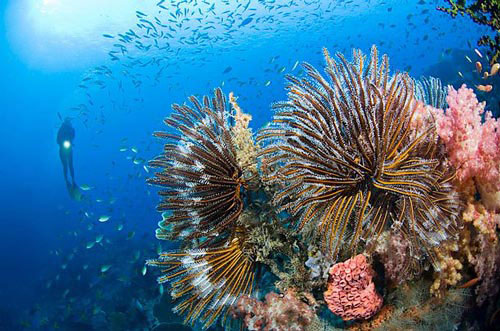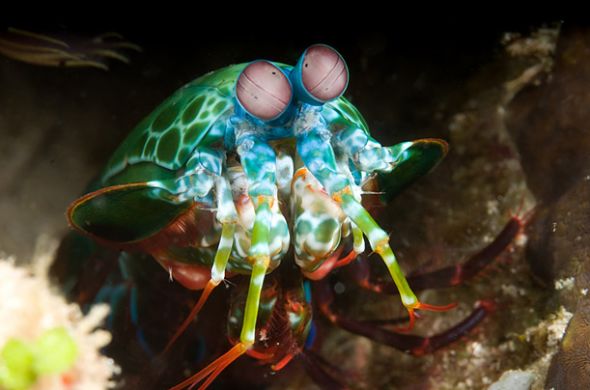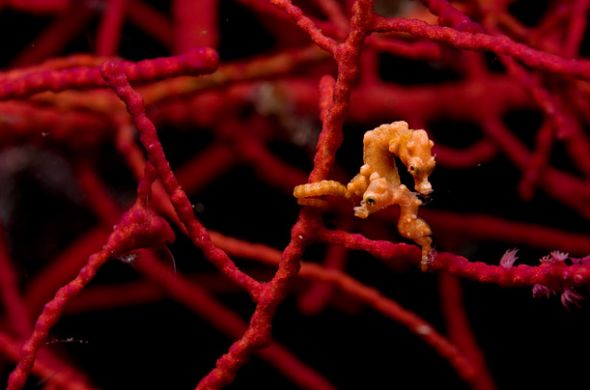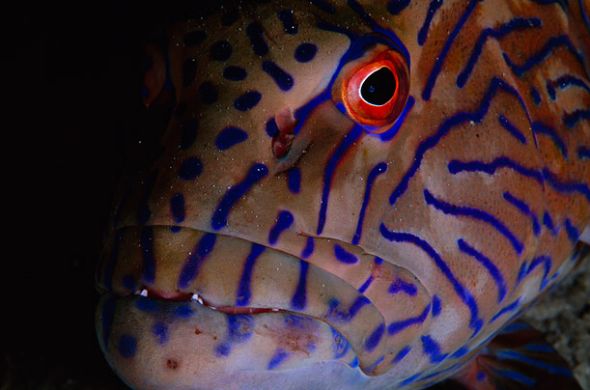Strange creatures under the seabed of Indonesia
Environmentalists voiced a warning about the rate of biodiversity decline in the Coral Triangle, which is the region with the highest biological diversity in the world, after the Amazon and the Amazon. Congo Basin.
Time magazine of the United States recently said that the Coral Triangle is one of the areas with the most diverse biodiversity in the world. However, because people are constantly catching and the sea is warming up many species of animals living in this area are seriously threatened.

The Coral Triangle is the sea area with the highest biological diversity in the world. (Photo: The Time).
The Coral Triangle extends from the waters of Indonesia, Malaysia, Philippines, Papua New Guinea to Solomon Islands. With an area of about 6 million km2, this is an area that accounts for 75% of the number of corals worldwide.
The Coral Triangle is also home to many of the highly endangered rare and endangered species, mainly of shark and sea turtles, including seven world-famous turtles. However, it is worrisome that in this area there is a very indiscriminate situation of fishing.
Below are pictures of unique creatures in the Coral Triangle in the Indonesian sea floor.

A shrimp "mantis".

The world's smallest species of seahorse Hippocampus Denise.

The unique grouper species xah pinephelus sp is unique.

Huge sea jellyfish.

Coral.

A sea lily (Feather star).

The coral Tubipora musica.

Giant mussels.
- Detecting mysterious super creatures on the seabed
- New Zealand bizarre creatures
- Dozens of strange creatures found in Indonesia
- Discover hundreds of strange creatures in the seabed of the Philippines
- Detecting alien creatures under the seabed of Indonesia
- Discover many strange 'alien creatures' in the deep sea
- Fish walking in the seabed of Indonesia
- Discovering strange sea creatures suspected of being aliens in America
- Marvel at the unimaginable beauty of strange creatures hidden in the sea
- Thousands of strange creatures like jellyfish drifted to the California coast
- Strange sea creatures in the coral reef
- Detect the bizarre red creature without eyes, mouth
 Surprised: Fish that live in the dark ocean still see colors
Surprised: Fish that live in the dark ocean still see colors Japan suddenly caught the creature that caused the earthquake in the legend
Japan suddenly caught the creature that caused the earthquake in the legend A series of gray whale carcasses washed ashore on California's coast
A series of gray whale carcasses washed ashore on California's coast Compare the size of shark species in the world
Compare the size of shark species in the world